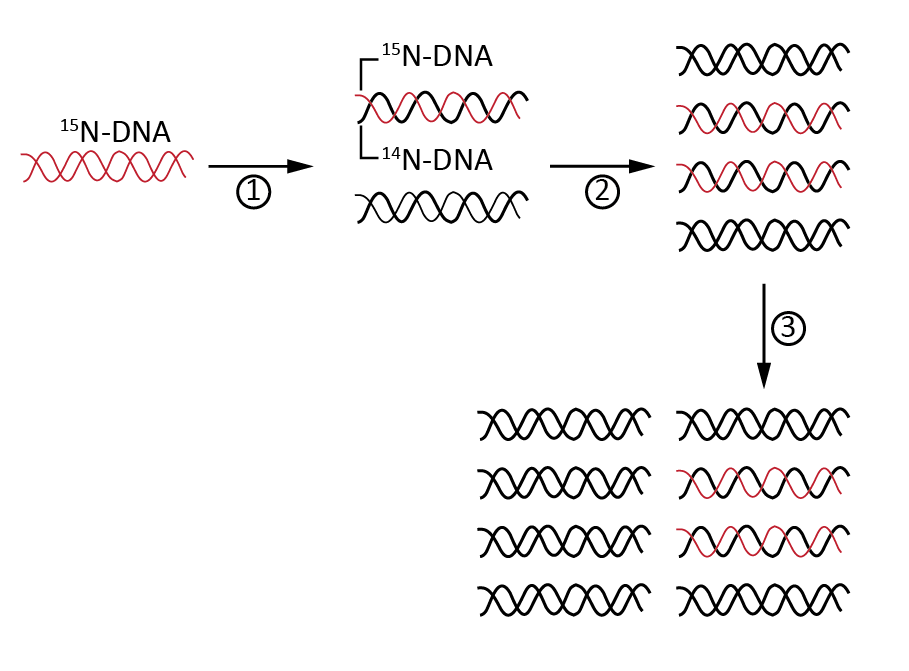DNA that has been labeled with 15N is used as the template for replication. Replication is carried using 14N labeled dNTP's. After 3 rounds of replication, what percent of DNA molecules have one strand containing 15N and one strand containing 14N? A. 50% B. 75% C. 25% D. 100%
Gene Interactions
When the expression of a single trait is influenced by two or more different non-allelic genes, it is termed as genetic interaction. According to Mendel's law of inheritance, each gene functions in its own way and does not depend on the function of another gene, i.e., a single gene controls each of seven characteristics considered, but the complex contribution of many different genes determine many traits of an organism.
Gene Expression
Gene expression is a process by which the instructions present in deoxyribonucleic acid (DNA) are converted into useful molecules such as proteins, and functional messenger ribonucleic (mRNA) molecules in the case of non-protein-coding genes.
DNA that has been labeled with 15N is used as the template for replication. Replication is carried using 14N labeled dNTP's. After 3 rounds of replication, what percent of DNA molecules have one strand containing 15N and one strand containing 14N?
| A. |
50% |
|
| B. |
75% |
|
| C. |
25% |
|
| D. |
100% |
Watson and Crick proposed that the double-strand DNA (dsDNA) replication is a semiconservative process. The dsDNA separates to form two single strands at the replication fork, and both the strands act as a template for new DNA strands synthesis. Meselson and Stahl proved semiconservative replication of DNA in prokaryote (E.coli)
The 15N is the heavy isotope of nitrogen. The DNA containing 15N acts as a template, and normal 14N isotope-labeled deoxy-nucleoside triphosphates (dNTPs) are used for synthesizing new DNA strands. During each replication, the double strands separate, and a template strand and a new strand form a new dsDNA. Since there is only 14N in the medium, the new strands are formed from 14N dNTPs only. Thus, the number of 15N remains the same.

From the given diagram
.png)
Therefore, option (c) is correct, and all other options are incorrect.
Step by step
Solved in 3 steps with 2 images









